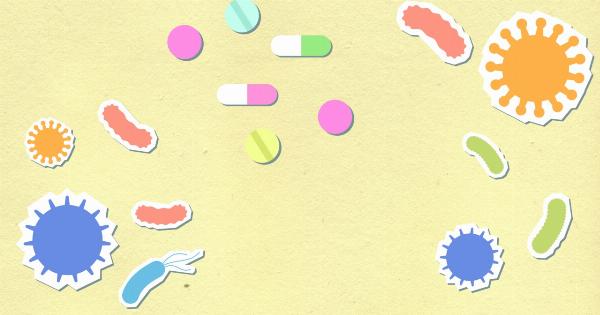Gaucher’s Disease is a rare genetic disorder that affects the body’s ability to break down a certain type of fat called glucocerebroside. This buildup of fat can cause various complications throughout the body.
In this article, we will explore the causes, symptoms, and treatment options for Gaucher’s Disease.
What Causes Gaucher’s Disease?
Gaucher’s Disease is caused by a deficiency of an enzyme called glucocerebrosidase.
This enzyme is responsible for breaking down glucocerebroside, a fatty substance that accumulates in various parts of the body, including the spleen, liver, lungs, and bone marrow. The deficiency of glucocerebrosidase leads to the accumulation of glucocerebroside, resulting in the development of Gaucher’s Disease.
Types of Gaucher’s Disease
There are three types of Gaucher’s Disease, each varying in severity and presentation:.
1. Type 1 Gaucher’s Disease: This is the most common and least severe form of the disease. It primarily affects the organs, such as the liver and spleen, and may cause anemia and low platelet count.
2. Type 2 Gaucher’s Disease: This form is more severe and affects the central nervous system. It can cause neurological symptoms, including seizures and developmental delays, leading to a shortened lifespan.
3. Type 3 Gaucher’s Disease: This form falls between Type 1 and Type 2 in terms of severity. It affects both the organs and the central nervous system, leading to various symptoms that worsen over time.
Symptoms of Gaucher’s Disease
The symptoms of Gaucher’s Disease can vary depending on the type and severity of the condition. Some common symptoms include:.
1. Enlarged liver and spleen: This can cause abdominal discomfort and a visibly enlarged abdomen.
2. Anemia and low platelet count: These can lead to easy bruising, prolonged bleeding, and fatigue.
3. Bone pain and skeletal abnormalities: The accumulation of glucocerebroside in the bones can cause pain, fractures, and deformities.
4. Fatigue and weakness: The buildup of fat can affect overall energy levels and lead to a feeling of constant tiredness.
5. Delayed growth and development (Type 2 and Type 3): In more severe forms of Gaucher’s Disease, children may experience delays in growth and development milestones.
6. Neurological symptoms (Type 2 and Type 3): These can include seizures, problems with coordination and balance, and cognitive impairment.
Diagnosis
Diagnosing Gaucher’s Disease involves a combination of clinical evaluation, blood tests, imaging studies, and genetic testing:.
1. Clinical evaluation: A healthcare provider will assess the patient’s symptoms, perform a physical examination, and review their medical history.
2. Blood tests: Blood tests can measure the levels of glucocerebrosidase enzyme activity and detect the presence of glucocerebroside in white blood cells.
3. Imaging studies: Imaging techniques like X-rays, CT scans, or MRI scans may be used to examine the bones, liver, and spleen for signs of enlargement or abnormalities.
4. Genetic testing: Genetic testing can confirm the presence of mutations in the gene responsible for producing glucocerebrosidase enzyme.
Treatment for Gaucher’s Disease
While there is no cure for Gaucher’s Disease, several treatment options can alleviate symptoms and improve the quality of life for individuals with the condition:.
1. Enzyme Replacement Therapy (ERT): This is the most common treatment approach for Gaucher’s Disease. ERT involves regular intravenous infusions of a synthetic glucocerebrosidase enzyme to help break down the accumulated glucocerebroside.
2. Substrate Reduction Therapy (SRT): SRT works by reducing the production of glucocerebroside in the body. It involves oral medication that inhibits the synthesis of glucocerebroside, thereby decreasing its accumulation.
3. Bone Marrow Transplantation (BMT): BMT is a more invasive treatment option reserved for severe cases of Gaucher’s Disease, primarily Type 2.
It involves replacing the defective bone marrow with healthy donor marrow, which can provide the missing glucocerebrosidase enzyme.
4. Symptomatic treatment: Additional treatments may be utilized to manage specific symptoms associated with Gaucher’s Disease, such as pain medications for bone pain or blood transfusions to address anemia.
Living with Gaucher’s Disease
Living with Gaucher’s Disease requires a multidisciplinary approach involving various healthcare professionals, including geneticists, hematologists, and specialized Gaucher’s Disease clinics.
Regular monitoring, follow-up visits, and adherence to treatment plans are essential for managing the disease effectively.
It is also essential for individuals with Gaucher’s Disease to adopt a healthy lifestyle by engaging in regular physical activity, maintaining a balanced diet, and avoiding smoking and excessive alcohol consumption.
Genetic counseling can also be beneficial for family members to understand the risk of inheriting Gaucher’s Disease.
Conclusion
Gaucher’s Disease is a complex genetic disorder that affects multiple organs and systems in the body.
While it is a chronic condition without a cure, advancements in treatment options have significantly improved the prognosis and quality of life for individuals with the disease. Early diagnosis, proper management, and a supportive healthcare team can make a substantial difference in the lives of those living with Gaucher’s Disease.





























